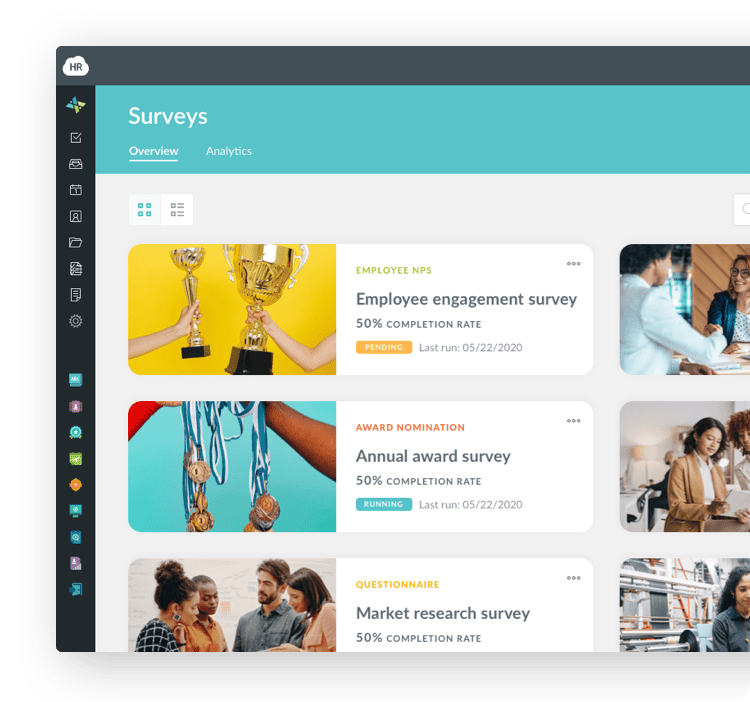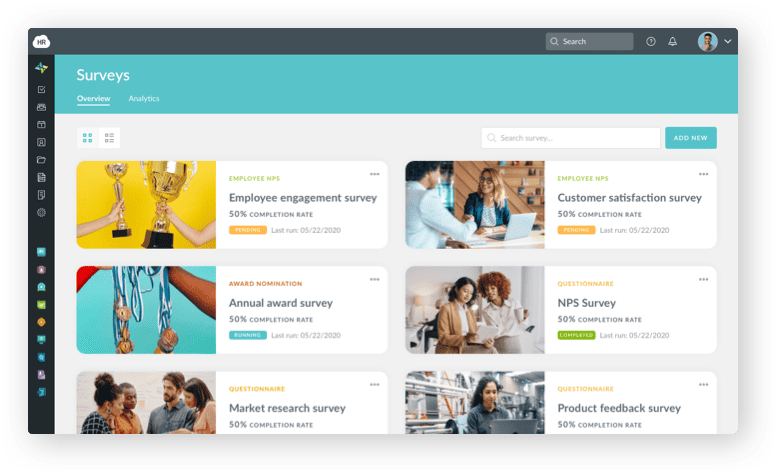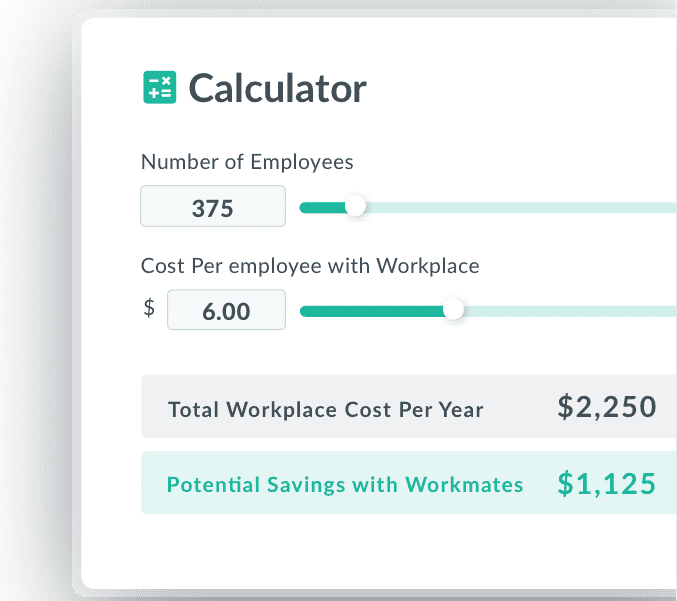

 Cut onboarding time
by 60%—here's the
Ultimate Checklist
that helped do it.
Cut onboarding time
by 60%—here's the
Ultimate Checklist
that helped do it.

Employee performance means a lot to every business. The primary goal of HR managers is to make sure that staff is satisfied with their job. Moreover, HR managers do a lot of paperwork, and it can be difficult to keep all the information in mind. Human Resource Management System or HRMS tends to simplify the HR processes.
There are a lot of ready-made HR solutions like Workday and HRM Labs. most of them offer a free trial period, so you can understand if the system fits your needs.
Every business has specific requirements and business goals, so HR management also differs. That’s why it’s better to develop a custom HRMS solution. This post will discuss the primary aspects of development, including advantages, must-have features, and steps to follow.
What Is HRMS?
Let’s start with the basics. Human Resource Management System (HRMS) stands for a software solution for mid-sized companies or enterprises to automate HR management.
HR solutions usually consist of various modules. They offer an HR department all the required tools to improve employees’ performance.
There is also HR management software for small businesses. However, they usually have different features compared to software for middle and big companies.
HRMS has a bunch of useful functions. For example, HRMS allows HR managers to work with employees’ quantitative and qualitative indicators. The primary goal of any HR management system is to retain skilled and qualified specialists at the company.
The Human Resource Management System has various functions like accounting, settlement, performance level, and more.
It’s possible to develop a separate system for tracking employees’ performance and development — Human Capital Management.
|
Function |
Explanation |
|
accounting |
- personnel accounting - staffing table - document flow - leave management - time tracking - pension - military accounting - and others |
|
settlement |
- salary - tax payments - allowances - deductions - and others |
Reasons to Integrate HRMS
Businesses of any size need an HR system for managing people effectively. It helps solve many issues:
-
Cost management. Labor costs tend to be the highest. HRMS allows planning and optimizing costs.
-
Efficient business process management. HRMS provides an opportunity to handle many HR business processes like keeping records about employees, payrolling, creating motivation plans, and others.
-
Legal compliance. It means compliance with legal regulations between employee and employer. It’s possible to settle complicated issues, implement flexible payrolling systems and personnel document flow.
-
Employees’ development. Companies can improve employees’ skills and knowledge with the help of individual development plans.


Benefits of Human Resource Management System
HRMS can significantly improve the business processes of your company. There are several advantages of using HRMS:
-
Easy access to information. Each employee has a personal profile on the HRMS. They can look through their tasks and ask for sick leave or vacation.
-
Advanced recruiting. Such a system helps create vacancy announcements and post them to various platforms. It’s also possible to store data of any candidates even if there’s no job position for them right now.
-
Multipurpose solution. One HRMS can have everything that HR managers need for comfortable work. The system allows monitoring progress, assigning tasks, tracking time, creating a competency matrix, and more.
-
Convenient cooperation. Custom-made HRMS can have a communication panel for the users to leave comments and share ideas. It’s possible to provide various access to different employees.
-
Progress tracking. You can create an individual development plan for each employee and monitor their progress via HRMS. As a result, workers can improve their skill level and quality of work. Additionally, such plans increase employees’ motivation since they see their progress.
-
Payroll management. Last but not least is expenses management. HR managers and accountants may use HR management systems to estimate payrolls, taxes, sick leaves, and vacations.
Must-Have Features of an HR Management System
Creating a custom-made HRMS, you need to consider the required features. Of course, the final feature list will always depend on your project requirements and business needs. But there are several must-have features that are useful for any business.
Progress tracking
HRMS provides supervision and management of employees’ performance levels, tracking progress, sharing individual development plans, and assigning tasks.
Scheduling
To manage employees effectively, there should be an opportunity to mark attendance and shifts. For example, it’s possible to track vacations, sick leaves, day-offs on the HRMS software. As a result, the work is more organized for employees and HR managers.
Time tracking
If it’s required to monitor how much time the employee spends on a certain task, employees can use a time tracking feature. This feature is also helpful for analyzing employees’ performance. You can use the collected information during the performance review.
Recruiting management
A recruiter can keep and organize the data about candidates. The system provides an applicant tracking feature, so recruiters can easily divide information into parts like portfolio, certificates, work experience, and more.
Employees education
Employees need to increase their skills and knowledge to become better specialists and raise their salaries. HR managers can use this feature to announce meetups and conferences. They can also post interesting and useful materials for the employees to get new skills.
Payrolls
Payrolling is significant for any business. This task tends to be time-consuming and complicated. HRMS provides an opportunity to calculate expenses like taxes, salaries, paid time off, sick leaves, and vacations.
Reports
HR management systems can collect data about each employee and provide reports on their performance. As a result, HR managers don’t need another software solution to analyze the information.
Push notification
This feature is profitable for both company and employees. Notifications about any changes, meetups, upcoming meetings, or other reminders can pop on a mobile device or PC screen.
How to Create a Custom-Made Human Resource Management System
There are eight significant steps to follow if you want to develop a custom HRMS.
-
Step #1. Determine your reasons for creating a custom HRMS.
-
Step #2. Communicate with employees from the HR team to figure out their problems and ways to solve them with an HR management system.
-
Step #3. Create a list with the required features for your Human Resource Management System.
-
Step #4. Pick a platform for your solution — web, mobile, or both. You need to analyze your employees’ needs. Mobile solutions are more comfortable to use on the go, while web apps are perfect for personal computers. It’s also possible to create HR cloud solution to ensure access from any device.
-
Step #5. Hire a qualified and experienced development team. You can hire an in-house team or outsource the development to a reliable vendor. Hiring an in-house team, you can control the development process and have smooth communication. But this option is much more expensive than outsourcing. Many software development companies offer affordable rates and high quality, that’s why outsourcing gains popularity. To reduce cost, you can pick a dedicated team model. In this case, you hire a team of developers for a project but manage them on your own.
-
Step #6. Discuss the scope of work with your team. The development can take a significant amount of time. The more complicated features your solution has, the more time software engineers need.
-
Step #7. Estimate the budget and set deadlines. It’s quite complicated to determine the price of custom HRMS since it can vary between $25,000 and $350,000 (or even go up). Everything depends on system complexity and your requirements.
-
Step #8. Support and improve your solution. HRMS is a complicated system with many integrations, so you need to constantly support and enhance your software. It’s better to continue cooperation with the development team.
As you can see, the Human Resource Management System can improve your internal business processes. It’s better to choose custom HRMS development to meet all your business requirements and needs.
About Author: Vitaly Kuprenko is a technical writer at Cleveroad, a mobile and web app development company in Ukraine. He enjoys writing about tech innovations and digital ways to boost businesses.
Find Out How Much You Can Save by Switching to Workmates.
and save upwards of 60%

Keep Reading
BambooHR vs HR Cloud: Which HRIS Actually Scales for Growing Companies?
TL;DR: BambooHR's apparent simplicity becomes a major limitation as companies scale past
The Hidden Metrics of Frontline Success: Beyond Engagement Scores
"What gets measured gets managed, but what gets measured well gets transformed." — Peter
Embracing Diversity: Recognizing Different Cultures in the Workplace
Workplaces today reflect the incredible diversity of the world around us. People bring
Like What You Hear?
We'd love to chat with you more about how HR Cloud® can support your business's HR needs. Book Your Free Demo

Build a Culture of Recognition. Boost Engagement. Guaranteed.
Workmates empowers employees to stay informed, connected, and appreciated—whether they’re on the front line, in the office, or remote. Recognition drives 12x higher engagement.Trusted by industry leaders in every sector




Cut Onboarding Costs by 60%.
Take the confusion and follow-ups out of onboarding with automated workflows, digital forms, and structured portals—so new hires ramp faster 3X quicker.Trusted by industry leaders in every sector





